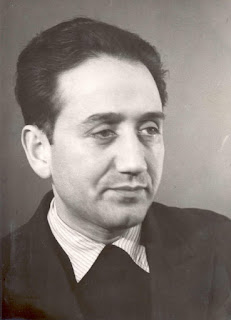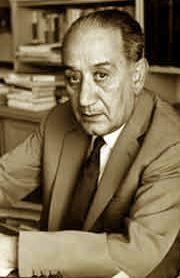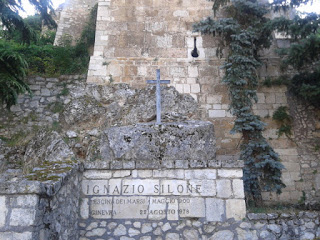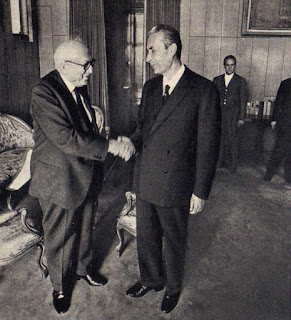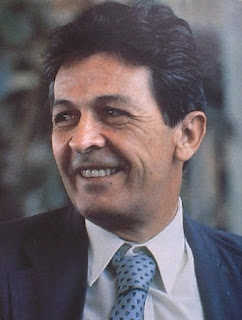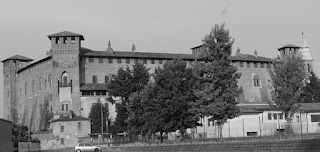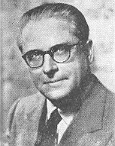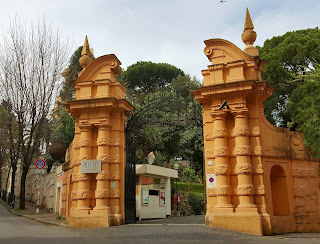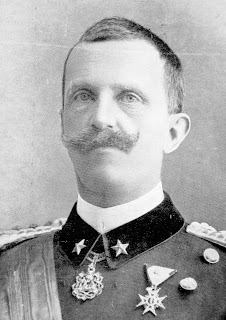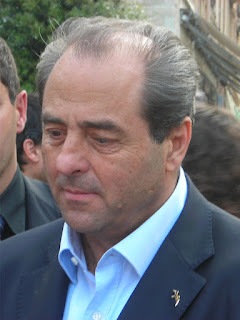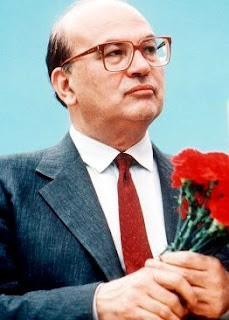Valiant republican opposed Mussolini and served his country
Ardent anti-Fascist Randolfo Pacciardi, who was Deputy Prime Minister and then Minister of Defence for the Italian Government between 1948 and 1953, died on this day in 1991 in Rome.
Pacciardi had to flee Italy when
Mussolini outlawed all opposition
Pacciardi had to live abroad in exile for many years after the Fascists outlawed all opposition parties in 1926, but he was able to return to Italy in 1944 after the liberation of Rome.
He was born in 1899 in Giuncarico in the province of Grosseto in Tuscany. By the time he was 16 years old, Pacciardi had become a member of the Partito Repubblicano Italiano (PRI) the Italian Republican Party.
He was a supporter of Italy’s participation in World War I and enrolled in the officers’ school of the Italian Army. He took part in the fighting and received two silver medals and a bronze medal for military valour, a British military cross and a French croix de guerre.
After receiving a law degree from the University of Siena in 1921, Pacciardi wrote for a local newspaper in the city.
In 1922 he went to live in Rome, where he became an opponent of the violent Fascist squads of the time, and he established Italia Libera, an anti-Fascist veterans’ organisation. They were one of the few groups to plan for armed opposition to Benito Mussolini after the assassination of the socialist politician Giacomo Matteotti. They were also one of the first groups to be banned by the Fascist Government in 1925.
When the Fascists outlawed all rival parties in 1926, Pacciardi was sentenced to five years of internal exile, but he was able to escape to Austria.
 |
| Luigi Einuadi was among Pacciardi's colleagues in postwar government |
He helped other anti-Fascists with logistical support, including a future president of Italy, Sandro Pertini, for whom he procured a counterfeit passport.
He helped organise troops during the Spanish Civil war in which he himself was wounded. Then he moved to Paris, where he founded a magazine, La Giovine Italia, which was named after the Young Italy movement launched by Giuseppe Mazzini in the 19th century.
The German invasion of France forced Pacciardi to flee to America with his wife, Luigia, and they managed to get to New York after travelling through South America on false documents.
After Pacciardi’s return to Italy towards the end of the war, he became national secretary of the Partito Repubblicano Italiano and was elected to the constituent assembly of Italy in 1946. With the end of the monarchy in Italy, the Republican Party entered a coalition government for the first time.
He became a Deputy Prime Minister with Liberal Luigi Einaudi and Social Democrat Giuseppe Saragat. He was elected to Parliament in 1948 and served as defence minister until 1953, supporting Italian membership of NATO.
 |
| Pacciardi's tomb in the municipal cemetery at Grosseto after his death in 1991 |
He founded a new party, the Democratic Union for the New Republic, but his party failed to attract many votes in the 1968 election.
In 1974 he was accused of plotting an attempted coup against the government but the charges against him were later dropped. In 1979 he asked to be readmitted to the PRI and this was granted. In his final years he was a supporter of Prime Minister Bettino Craxi.
Pacciardi died from a stroke on 14 April 1991 at the age of 92. The President of Italy, Francesco Cossiga, granted him a state funeral and he was buried in the municipal cemetery of Grosseto.
During his long life, Pacciardi became a friend of Ernest Hemingway and he also advised Michael Curtiz on the making of Casablanca.
Travel tip:
The polygonal Palazzo Aldobrandeschi
is one of Grosseto's curiosities
Grosseto is the largest town of the Maremma region of Tuscany, with approximately 65,000 inhabitants. Located in the alluvial plain of the Ombrone river, about 14km from the Tyrrhenian sea, the town grew in importance several centuries ago because of the trade in salt, that was obtained in salt pans in the now reclaimed lagoon that covered most of the area between Grosseto and the sea. By 1328, the silting up of the lagoon robbed Grosseto of its salt revenues, after which is became largely depopulated, vulnerable to outbreaks of malaria caused by the mosquitos that thrived in the marshy areas surrounding the town. It began to expand again in the 19th century. Tourists today are drawn to visit by the walls begun by Francesco I de Medici in 1574, by the Romanesque cathedral, dedicated to St. Lawrence, and by the polygonal Palazzo Aldobrandeschi, on Piazza Dante, seat of the provincial government.
Giuncarico, where Pacciardi was born, is a charming and well-preserved mediaeval village, built on a hill overlooking the Bruna river. Founded in the eighth or ninth century, the village was once under the rule of the noble Albobrandeschi family and later became part of the Republic of Siena before joining the Grand Duchy of Tuscany in the 16th century. It is known for its protective walls, built in the 1100s with two stone-arch gateways into the village, with historic palaces along Via Roma, dating back to the 1400s and 1500s. Despite its small size, with just 449 residents, the village offers a few shops, cafes, and restaurants. The Piazza del Popolo, halfway along Via Roma, offers a panoramic view of the surrounding countryside. The area is also notable for several wineries, including the celebrated Rocca di Frassinello, which is approximately 15 minutes outside the village by road. Situated about 80km (50 miles) southwest of Siena, Giuncarico is some 25km (16 miles) north of Grosseto.
Also on this day:
1488: The death of papal military leader Girolamo Riario
1609: The death of violin maker Gasparo da Salò
1907: The first Milan-Sanremo cycle race
1920: The birth of Olympic bobsleigh champion Lamberto Dalla Costa
1980: The death of children's author Gianni Rodari
(Picture credits: Pacciardi tomb by Sofocle77; Palazzo Aldobrandeschi by Sailko; Giuncarico skyline by LigaDue; via Wikimedia Commons)

